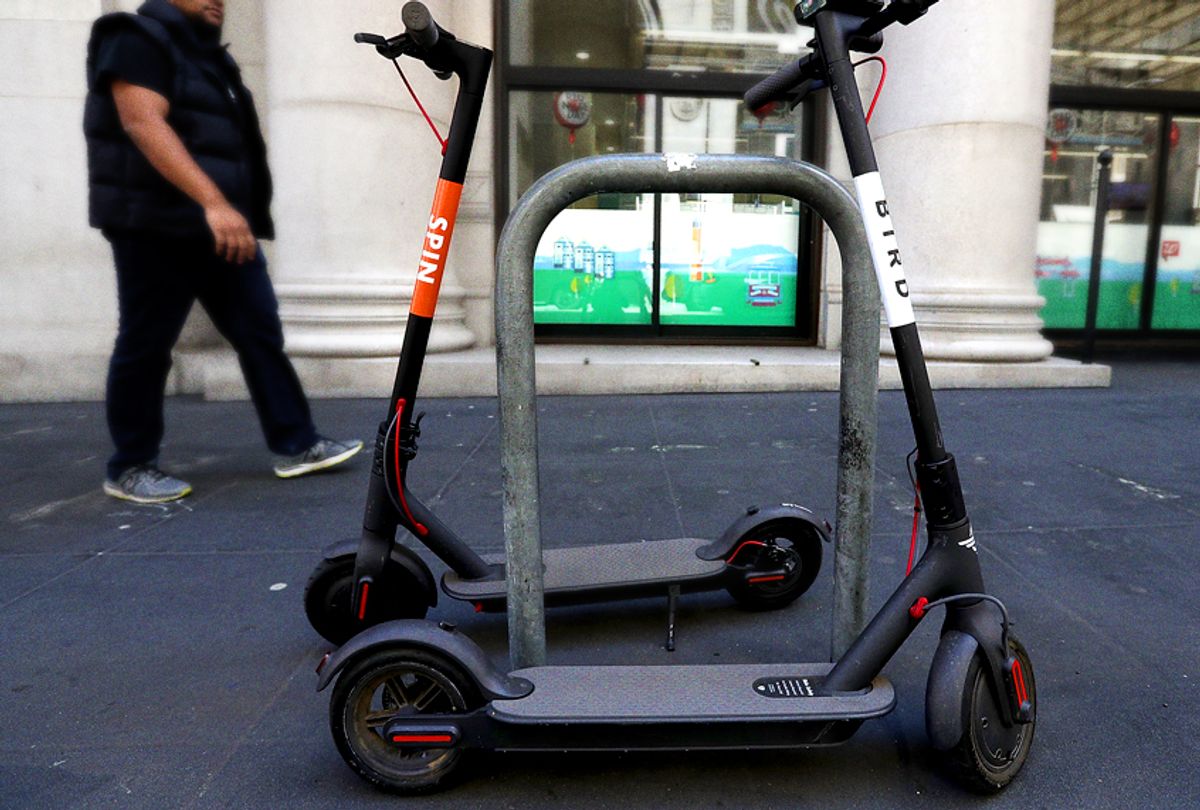AUSTIN, Texas — University of Texas star baseball shortstop David Hamilton hit a pothole riding an electric scooter, tearing his Achilles tendon and requiring surgery. He’ll miss the season. Cristal Glangchai, the CEO for a nonprofit, hit a rock riding her scooter, landing her on the pavement just blocks from home.
“I lost control and ended up getting a concussion and a broken rib,” said Glangchai, a 41-year-old mother of four.
And Austin’s first scooter-related death occurred over the weekend. Police identified the scooter rider as Mark Sands, a 21-year-old UT student from Ireland, who died Saturday, just one day after suffering critical injuries when the electric scooter he was riding collided with a car.
As many as 14,000 dockless electric scooters are on the streets of Austin, whose 326 square miles are home to almost 1 million people. That likely makes Austin one of the cities with the highest scooter-to-citizen ratio in the nation — though the electric vehicles are also rapidly multiplying on the streets and sidewalks of Atlanta, San Diego, Nashville and Washington. At least 1,200 more are poised to appear in Austin whenever already-licensed operators deploy them. Ten companies have licenses to operate now.
Austin city leaders, worried about injuries for both users and pedestrians, asked the Centers for Disease Control and Prevention to investigate scooter-related crashes and injuries. The first-ever CDC scooter study will also look at how accidents could be prevented.
“We’re totally paranoid,” said Forrest Preece, a retired advertising executive who lives in a downtown condo and leads a largely pedestrian life.
“I’m 72 and my wife is 70. It would be easy to knock us over,” he said. “My wife actually went online and found a little mirror to attach to her wrist to look behind her so she’s not constantly turning around. We go single file so she can see that mirror and see what’s behind us.”
These scooters are everywhere — speeding by or strewn on sidewalks — and are likely to overwhelm the city this spring as Austin readies for an onslaught of scooter-riding visitors during the annual SXSW Conference & Festivals, running March 8-17. Last year’s SXSW drew 432,500 people.
The scooter study was launched in December when three CDC epidemiologists spent two weeks in Austin reviewing incidents and scooter-related injuries during a 60-day period from September to November. They began contacting the 258 individuals identified through EMS calls or who visited emergency rooms with a scooter-related injury. Findings from this study will likely be released in March and could have far-reaching effects as cities across the country grapple with reports of injuries from these e-scooters.
“We don’t know if there’s something unique about Austin or the population there that may be different from other parts of the United States or globally,” said Eric Pevzner, chief of the Atlanta-based CDC Epidemic Intelligence Service, which is conducting the probe. “The rate of scooter injuries in Austin may be consistent with what’s being noticed in other places, or it may be much higher.”



Shares